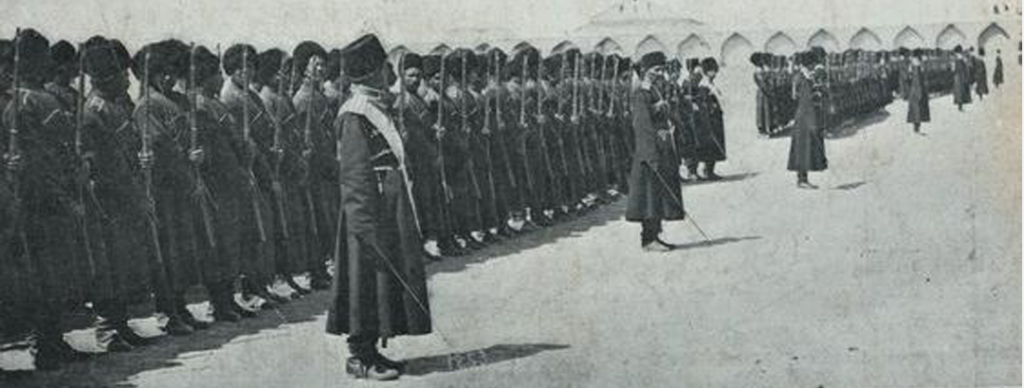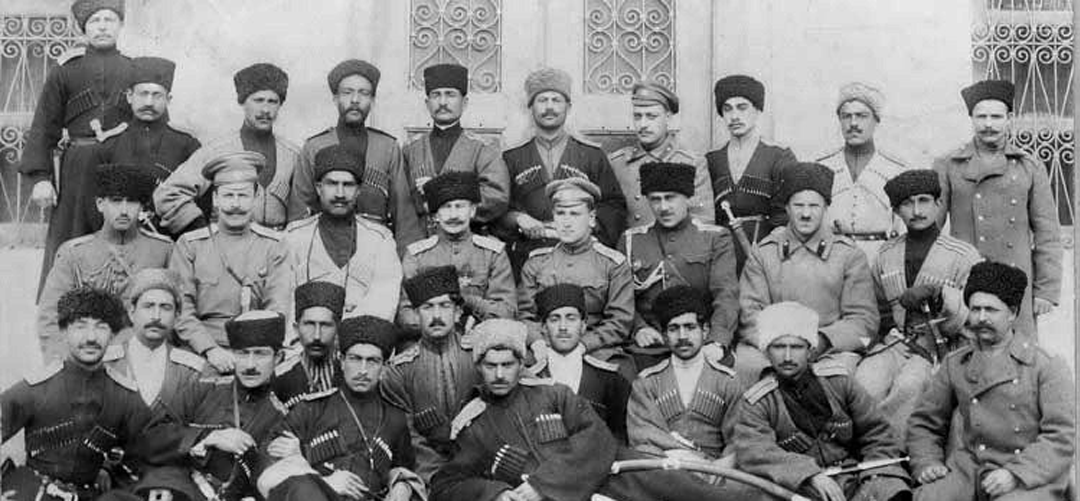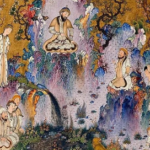In late 1920, the Persian Soviet Socialist Republic in Rasht was preparing to march on Tehran with “a guerrilla force of 1,500 Jangalis, Kurds, Armenians and Azerbaijanis”, reinforced by the Bolsheviks’ Red Army. This fact, along with various other disorders, mutinies and unrest in the country created an acute political crisis in the capital. By 1921, the ruling Qajar dynasty of Persia had become corrupt and inefficient. The oil-rich nation was somewhat reliant on the nations of Britain and Russia for military and economic support. Civil wars earlier in the decade had threatened the government, and the only regular military force at the time was the Cossack Brigade. The Anglo-Persian Agreement which involved Great Britain and Persia, was centered on the drilling rights of the Anglo-Persian Oil Company. Tehran under the command of Reza Khan, ignoring repeated royal orders to return to their barracks.

The Cossacks reached Tehran meeting little resistance. Reza Khan forced the government to dissolve and oversaw his own appointment as minister of war. Reza Khan told representatives of the cabinet, the shah, and the British legation that the Cossacks intended to install a strong government in Tehran in
order to forestall the anticipated Bolshevik assault.
Reza Khan also ensured that Ahmad, still ruling as shah, appoint Ziaoddin Tabatabaee as prime minister. Many political activists & members of the oligarchy were immediately arrested, in order to prevent organized opposition and to extract money from some of them. The coup was widely believed to be a British attempt to enforce at least the spirit of the Anglo-Persian agreement.
The new Persian government decided not to support the Anglo-Persian Agreement, and instead adopted very different policies. Ziya al-Din had promised land reform and national independence, and his priority was to come to an agreement with the Bolsheviks on his borders rather than the British. The Russo-Persian Treaty was signed just days after the coup, and represented a serious shift in Persian foreign policy away from Britain. The Bolsheviks and Persians promised not to intervene in each others’ affairs, nor allow others to do so through their territory. If a foreign power occupied Persia, the Red Army could intervene.
In 1923 Ahmad Shah agreed to appoint Reza Khan prime minister and to leave for Europe. The shah was never to return. Reza Khan seriously considered establishing a republic, as Atatürk had done in Turkey, but abandoned the idea as a result of clerical opposition. In October 1925, a Majlis dominated by Reza Khan’s men deposed the Qajar dynasty; in December the Majlis conferred the crown on Reza Khan and his heirs. The military officer who had become master of Iran was crowned as Reza Shah Pahlavi in
April 1926.
One General, Sepahbod Amir Ahmadi, tried to stand up against the establishment of a new monarchy, but on a visit to his now imprisoned brother-in-law, General Heydargholi Pessian, who had been one of the leaders of the coup that defeated the Qajar dynasty, Amir Ahmadi confessed that his efforts to prevent Reza Khan being made Shah and the monarchy reinstated were being thwarted by the British. Reza Khan was finally declaredShah, taking the surname Pahlavi and thus founding the Pahlavi dynasty.
During the reign of Reza Shah Pahlavi, educational and judicial reforms were effected that laid the basis of a modern state and reduced the influence of the religious classes. A wide range of legal affairs that had previously been the purview of Shi’i religious courts were now either administered by secular courts or overseen by state bureaucracies, and, as a result, the status of women improved. The custom of women wearing veils was banned, the minimum age for marriage was raised, and strict religious divorce laws (which invariably favoured the husband) were made more equitable.





